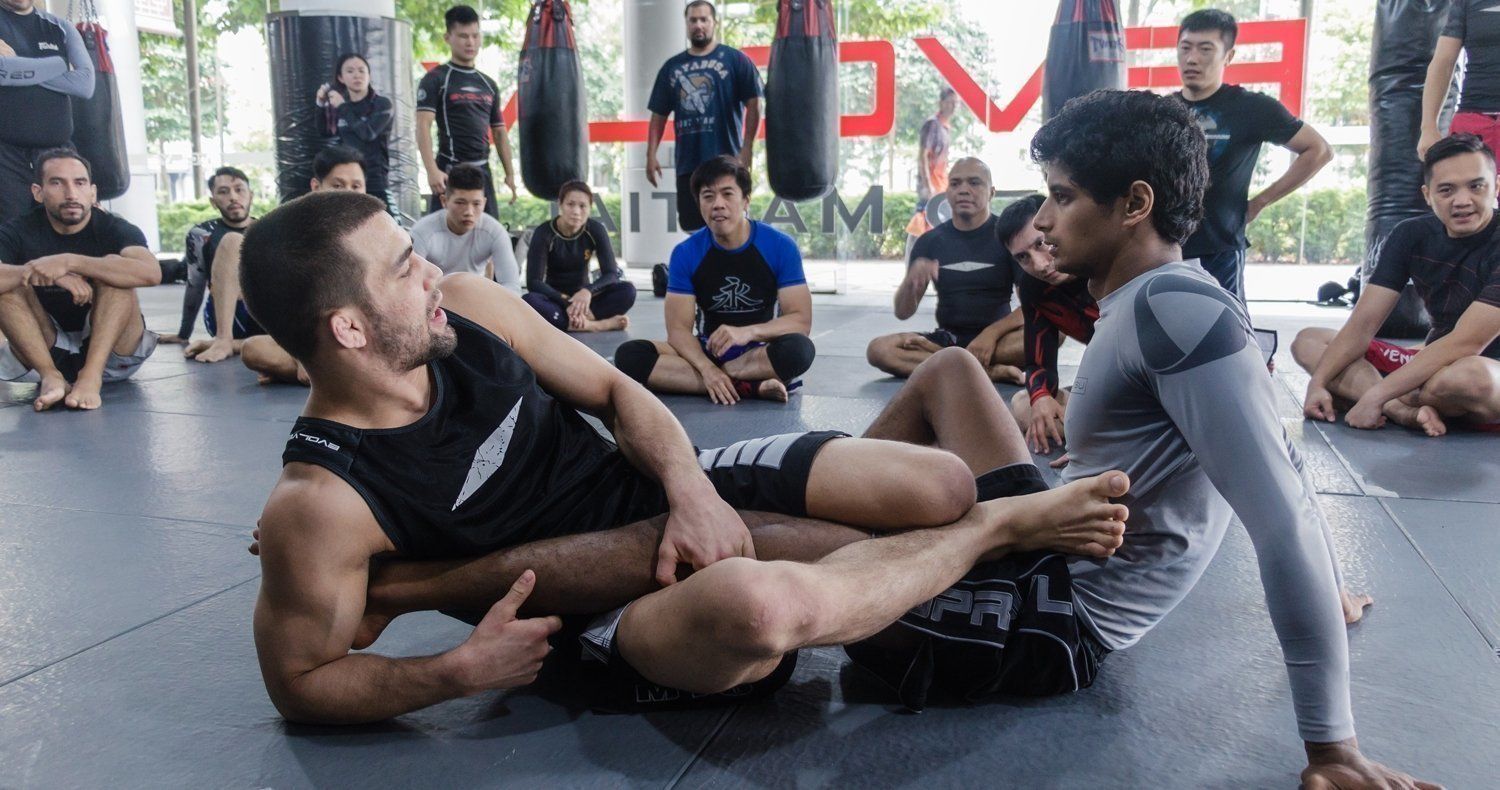Here Are The 5 Leg Locks You Need To Know

Guest post by Evolve MMA, Asia’s premier championship brand for martial arts. It has the most number of World Champions on the planet. Named as the #1 ranked martial arts organization in Asia by CNN, Yahoo! Sports, FOX Sports, Evolve MMA is the top rated BJJ gym in Singapore.
Leg locks are more popular than ever! From the competition circuit to your gym mats, practitioners are expressing more and more interest in leg locks. In many of the top grappling competitions, it’s common to see matches end with a leg lock submission.
Before you go submitting your friends and training partners with leg locks in your own academy, be sure to check the rules of your club first. Some gyms follow the well-known International Brazilian Jiu-Jitsu Federation guidelines for leg locks. Depending on belt level, you may be allowed to administer only a couple leg lock submissions. It is always important to ask the overseeing professor whether leg locks are allowed, what leg lock ruleset is followed in the academy.
Now that we have addressed important items to consider about leg locks at your own gym, let’s look at the leg locks you need to know.
1) Straight Ankle Lock
Often referred to as the Achilles lock, the straight ankle lock is undoubtedly the very first leg lock one learns in Brazilian Jiu-Jitsu. This leg lock can be applied by newbies as the submission is relatively simple to administer.
Applying the straight ankle lock requires you to circle your forearm(overhook) over one of your opponent’s legs, specifically at the Achilles heel. Using the pressure generated when pressing your foot against your opponent’s rib cage, and that of your hips moving forward, while applying an upward force using your forearm at your opponent’s Achilles heel secures this submission.
2) Kneebar
The kneebar should be in everyone’s arsenal when it comes to leg lock attacks because it is effective, and like the straight angle lock, is relatively easy to administer. One can think of the kneebar as the armbar, only for the legs. In the armbar, you would use the arm as the lever to apply force to at the hand or wrist, whereas with the kneebar you would use the leg as the lever and apply force at the Achilles tendon, or the ball of the heel.
Remember to place your opponent’s knee on your belly as this is essential when hyperextending their leg, using the knee as the pivot point.
3) Calf Slicer
The calf slicer is one of those techniques that generally are not administered first along a chain of leg lock attacks, but administered in reaction to your opponent escaping or reacting to your first leg lock attempt. Often times their reaction will place them into position for the calf slicer.
Just as a bicep slicer requires you to lodge your forearm into your opponent’s crook of their elbow while bringing their wrist to touch their shoulder, the calf slicer requires you to place your shin in your opponent’s crook of their knee and then pull their foot closer to their buttocks. The pressure on their knee and calf will make them tap.
4) Toe hold
The toe hold submission is a foot lock that, more often than not, uses a figure-four grip on your opponent’s foot to twist their ankle, thereby hyperextending the ankle. The goal for the toe hold is to prevent your opponent from turning or kicking their leg away from you. Often times this would mean locking their movement using your clinched legs to secure their leg or any other part for your body to apply pressure on your opponent’s leg for stabilization.
5) Heel hook
Considered the granddaddy of foot locks, the heel hook is a lock on the ankle as well as the knee. In most gi BJJ systems, the heel hook is taught once a practitioner is a brown belt, once they have experience with other leg locks.
The submission is applied by locking your opponent’s leg and controlling their knee. A common completion of the submission is to gable grip your arms around the knee of your opponent’s controlled leg. Twisting the heel into your opponent generates torque at the ankle and then on to the knee.
Now that you have a good idea of the most important and common leg lock submissions, it’s time to find training partners that share the same desire as you to learn these specialized techniques. Before administering them on your friends, learn the rules for leg locks at your academy.
Practicing leg locks can be fun when everyone is aware of the technique and knows when to tap. Following the rules for your gym for leg locks, we can all be assured to train Brazilian Jiu-Jitsu with leg locks long into the future.






